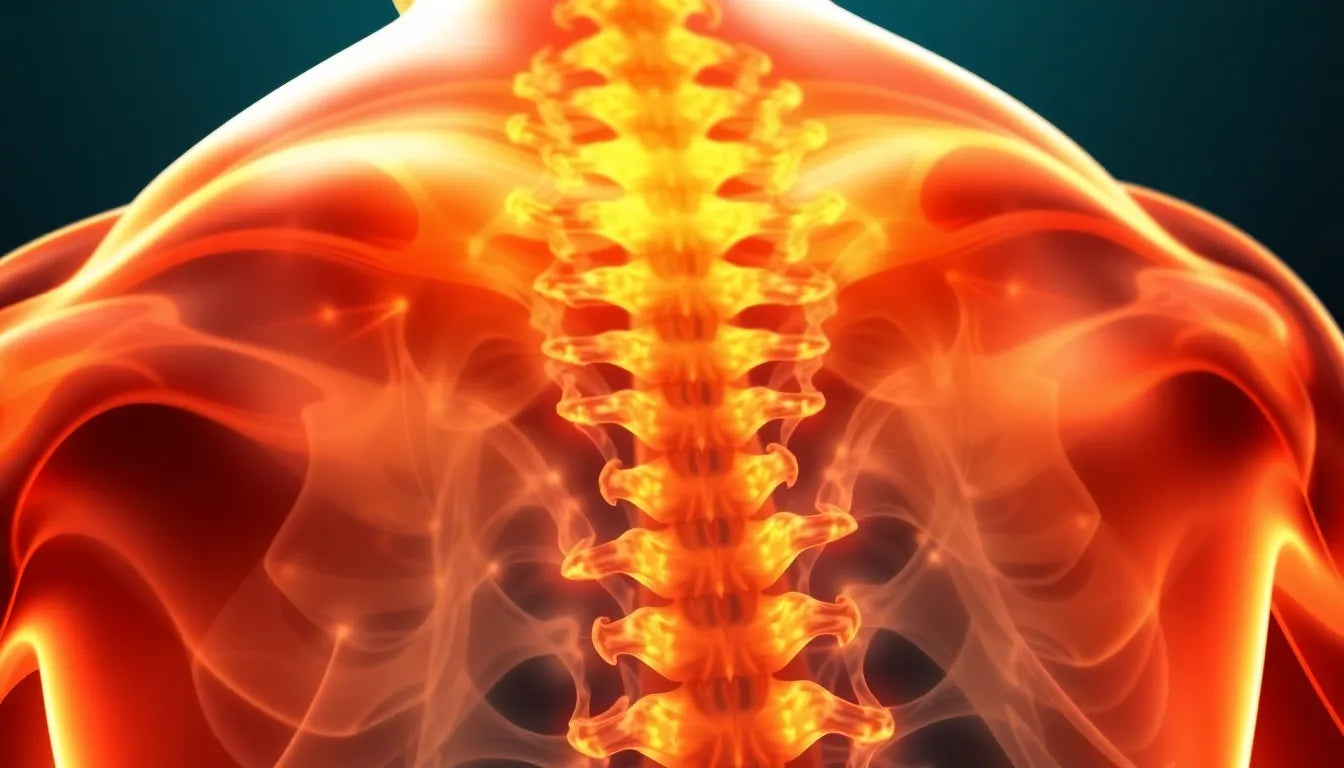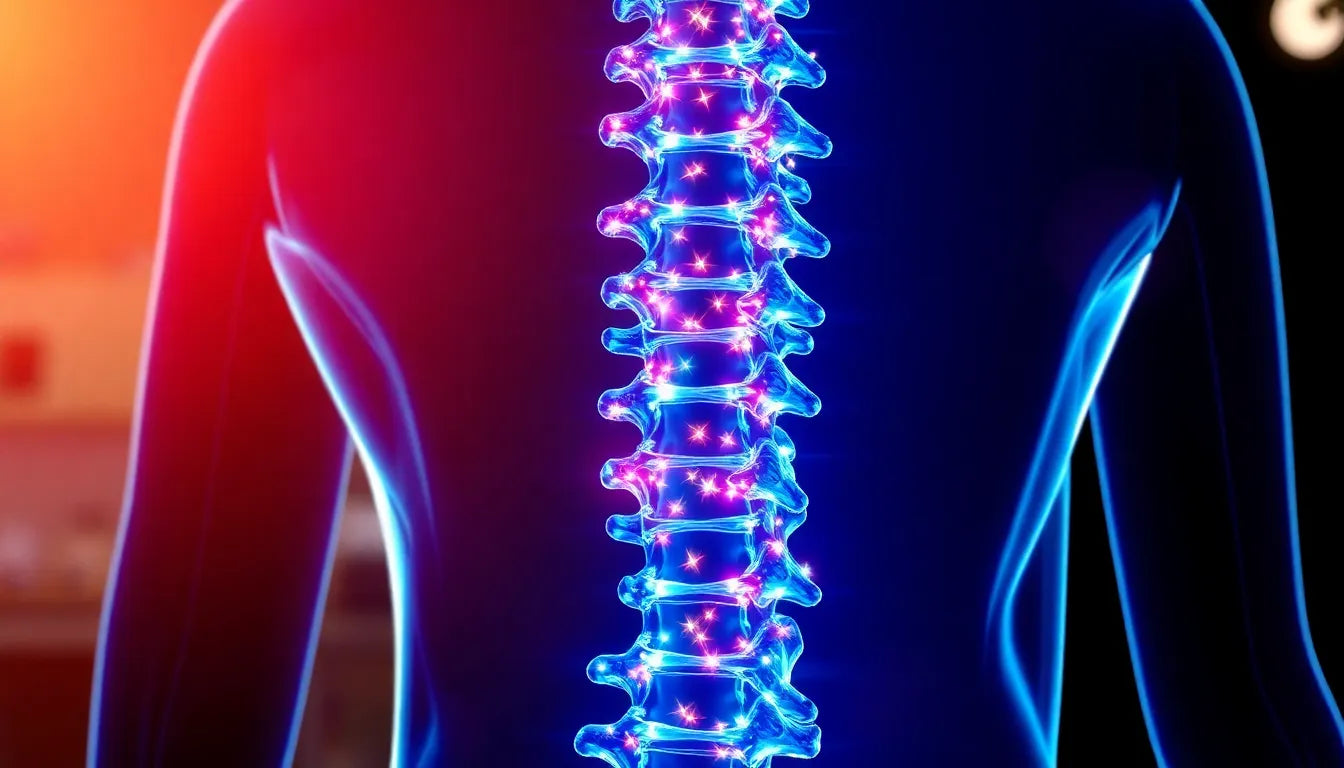Neck pain is a common ailment that affects millions of people worldwide, often disrupting daily activities and diminishing quality of life. While many instances of neck pain are benign and result from muscle strain or poor posture, it's important to consider whether your discomfort could be a symptom of a more serious condition, such as a herniated disc. This raises a crucial question: could your persistent neck pain be indicative of a herniated disc?
understanding herniated discs in the cervical spine
A herniated disc, sometimes referred to as a slipped or ruptured disc, occurs when the soft inner gel of a spinal disc pushes through a tear in its tougher exterior. This can happen in any part of the spine, but when it occurs in the cervical spine, or neck region, it can lead to a range of symptoms that affect not just the neck, but also the shoulders, arms, and even hands.
The cervical spine is composed of seven vertebrae, labeled C1 through C7, which support the head and enable its movement. These vertebrae are cushioned by intervertebral discs that act as shock absorbers, facilitating flexibility and protecting the spinal cord. When a disc in this region herniates, it can press on nearby nerves, leading to pain and other neurological symptoms.
The purpose of this blog post is to delve into the symptoms, causes, and diagnostic methods associated with herniated discs in the neck. By understanding these aspects, you can better assess whether your neck pain might be due to a herniated disc and seek appropriate medical advice.
recognizing herniated disc neck symptoms
Identifying the symptoms of a herniated disc in the neck is crucial for timely diagnosis and effective treatment. While neck pain is a common symptom, it is often accompanied by other signs that can help distinguish a herniated disc from other conditions. Here, we delve into the most prevalent symptoms that individuals with a herniated disc in the cervical spine may experience.
Persistent neck pain and stiffness are among the most common indicators. This discomfort can range from a dull ache to sharp, intense pain, often exacerbated by movement or prolonged periods of inactivity. In addition to neck pain, individuals may experience numbness or tingling in the shoulders, arms, or hands. This sensation, often described as "pins and needles," occurs when the herniated disc compresses nearby nerves.
Weakness in the hands or arms is another symptom that can significantly impact daily activities. Tasks that require fine motor skills, such as writing or typing, may become challenging. The pain may also radiate to the jaw, shoulders, or other nearby areas, further complicating the condition. Headaches originating from neck tension are not uncommon, as the strain on the cervical spine can affect surrounding muscles and tissues.
Muscle weakness or spasms in the shoulders or arms can also occur, adding to the discomfort and functional limitations. These symptoms arise when the herniated disc exerts pressure on the spinal nerves, disrupting normal nerve function.
| Symptom | Description |
|---|---|
| Neck pain and stiffness | Persistent discomfort, ranging from dull to sharp pain, often worsened by movement. |
| Numbness or tingling | "Pins and needles" sensation in shoulders, arms, or hands due to nerve compression. |
| Weakness in hands or arms | Difficulty performing tasks requiring fine motor skills. |
| Radiating pain | Pain extending to jaw, shoulders, or nearby areas, complicating the condition. |
| Headaches | Originating from neck tension, often due to strain on the cervical spine. |
| Muscle weakness or spasms | Discomfort and functional limitations from pressure on spinal nerves. |
medical explanations and causes of herniated discs in the neck
Understanding the anatomy of the cervical spine is essential to comprehending how herniation occurs. The cervical spine is composed of vertebrae cushioned by intervertebral discs, which act as shock absorbers. When the inner gel of a disc protrudes through its outer layer, it can press against spinal nerves, causing the symptoms described earlier.
Several factors contribute to the development of a herniated disc in the neck. Age-related wear and tear is a common cause, as the discs naturally degenerate over time, becoming more susceptible to herniation. Sudden injury or trauma, such as whiplash from a car accident, can also result in a herniated disc. Poor posture and repetitive strain, often from prolonged computer use or improper lifting techniques, can exacerbate the risk.
The impact on spinal nerves can lead to significant complications if left untreated. Compressed nerves can cause chronic pain and neurological deficits, affecting an individual's quality of life. Understanding these causes and symptoms allows for better management of the condition and highlights the importance of seeking medical advice for persistent neck pain.
diagnosis and treatment options for herniated discs in the neck
Early diagnosis of a herniated disc in the neck is crucial for effective treatment and prevention of further complications. The diagnostic process typically begins with a thorough physical examination and a detailed patient history to assess symptoms and potential causes. During the examination, a healthcare provider may test for muscle strength, reflexes, and range of motion to identify any neurological deficits.
Imaging tests, such as MRI or CT scans, are commonly used to confirm the diagnosis. These advanced imaging techniques provide detailed views of the cervical spine, allowing for the identification of disc herniation and the extent of nerve compression. Early detection through these methods can significantly impact the treatment plan and outcome.
Treatment options for a herniated disc in the neck range from conservative methods to surgical interventions, depending on the severity of the condition. Conservative treatments often include physical therapy, which focuses on exercises to strengthen neck muscles and improve flexibility. Medications, such as nonsteroidal anti-inflammatory drugs (NSAIDs) or muscle relaxants, may be prescribed to alleviate pain and inflammation.
Lifestyle changes, including ergonomic adjustments at workstations and posture correction, can also play a vital role in managing symptoms and preventing further injury. In cases where conservative treatments do not provide relief, surgical options may be considered. Procedures such as discectomy or spinal fusion aim to remove or repair the herniated disc and stabilize the cervical spine.
Early diagnosis and intervention are essential in managing herniated disc neck symptoms effectively. By addressing the condition promptly, individuals can reduce the risk of chronic pain and long-term complications, improving their quality of life.
frequently asked questions
What are the early warning signs of a herniated disc in the neck?
Early warning signs of a herniated disc in the neck can include mild neck pain or stiffness that gradually worsens, occasional tingling or numbness in the shoulders or arms, and intermittent headaches. These subtle symptoms may be overlooked but can indicate the onset of disc herniation.
How is a herniated disc in the neck diagnosed?
A herniated disc in the neck is diagnosed through a combination of physical examinations, patient history, and imaging tests such as MRI or CT scans. These methods help identify the presence of a herniated disc and assess the extent of nerve compression.
What are the non-surgical treatment options available?
Non-surgical treatment options for a herniated disc in the neck include physical therapy, medications such as NSAIDs or muscle relaxants, and lifestyle modifications like ergonomic adjustments and posture correction. These approaches aim to alleviate symptoms and improve neck function.
When should I consider surgery for a herniated disc?
Surgery for a herniated disc in the neck may be considered if conservative treatments fail to relieve symptoms, or if there is significant nerve compression leading to severe pain, weakness, or neurological deficits. A healthcare provider can help determine the appropriate timing for surgical intervention.
Can lifestyle changes prevent disc herniation?
Lifestyle changes can play a significant role in preventing disc herniation. Maintaining good posture, using ergonomic furniture, engaging in regular exercise to strengthen neck and back muscles, and avoiding repetitive strain can all help reduce the risk of developing a herniated disc.
Sources
- "Cervical Herniated Disc - Symptoms and Causes." WebMD.
- "Herniated Disc in Neck: Symptoms, Causes, and Treatment." Florida Surgery Consultants.
- "Herniated Disc: Overview and Treatment." Columbia Neurosurgery.
- "Herniated Disc: Causes, Symptoms, and Diagnosis." Healthline.
- "Herniated Disk - Symptoms and Causes." Mayo Clinic.


















